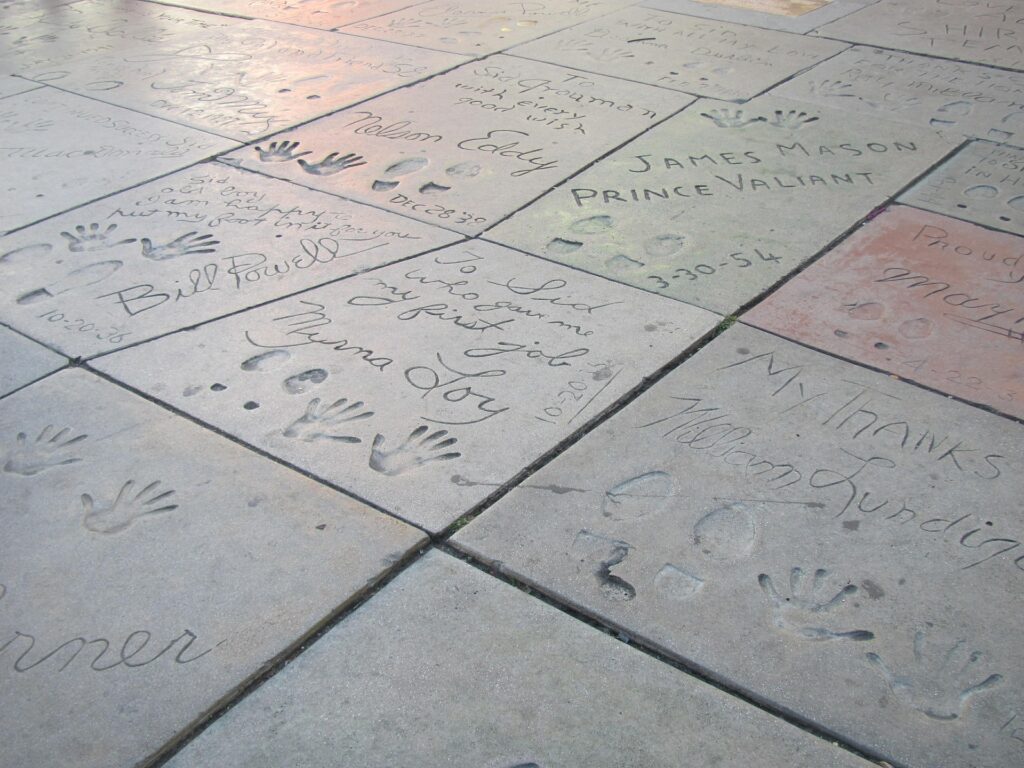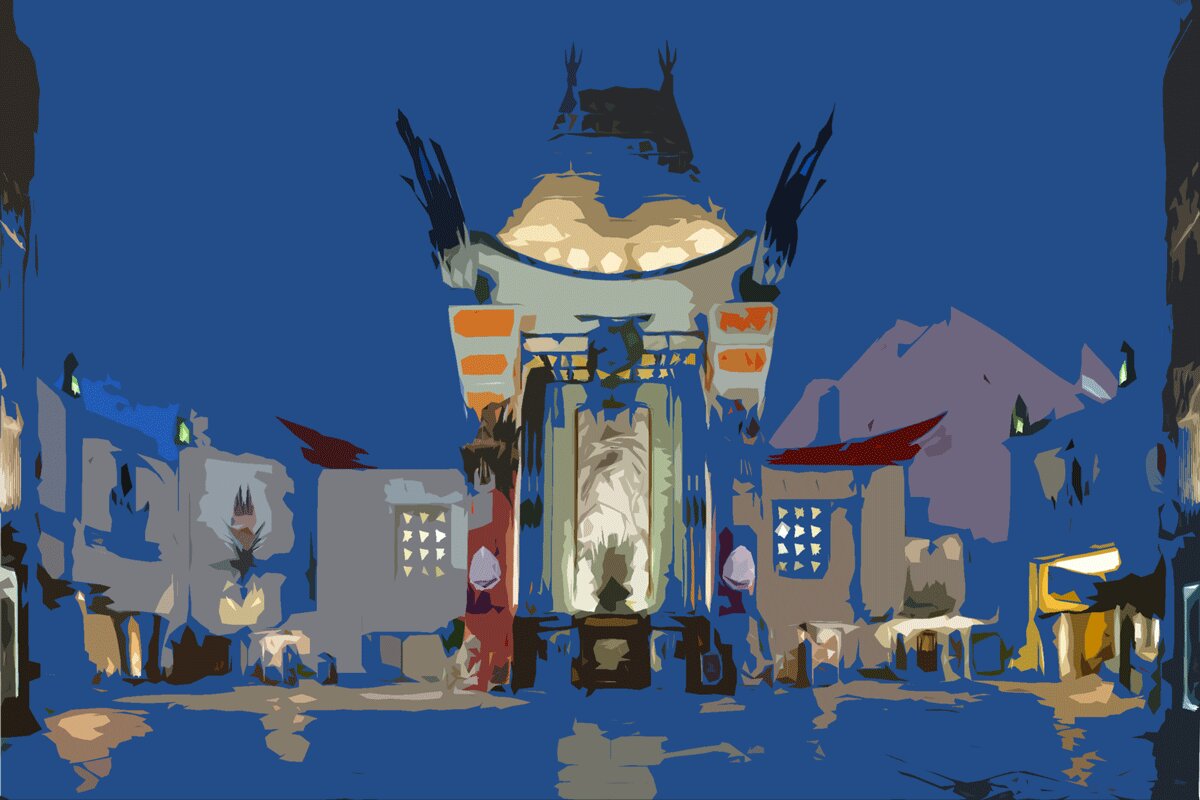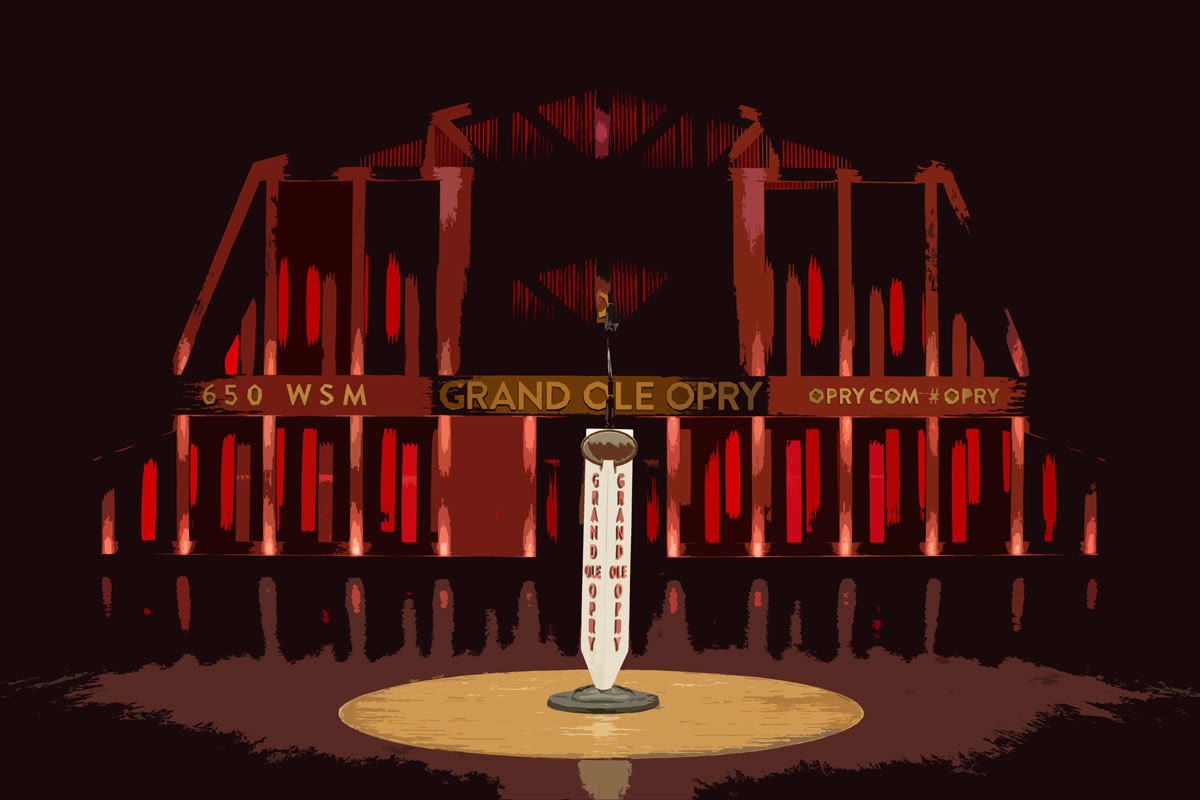By Jason Epperson
Listen Below:
Road Trip to TCL Chinese Theatre in California:
Hollywood, California. Land of make-believe. If you’ve ever been, you know that a lot of what glitters isn’t actually gold. A trip down Hollywood Boulevard these days is chock full of cheap costumed look-sort-of-alikes. The Hollywood walk-of-fame has somehow become the major symbol of this once harrowed place, and it’s a giant pay-to-pay scam. Does anyone really need to get their picture taken with David Spade’s star? Thankfully, Hollywood Boulevard isn’t all urine stench and phony idols. There’s one place where you can still, instantly be whisked back in time – Hollywood’s Chinese Theatre.
Formerly known as Grauman’s Chinese Theater, and also Mann’s Chinese Theater – the TCL Chinese theater is one of the true holywood icons that lives up to it’s reputation. Designed to look like a Chinese pagoda on the outside, it’s surely a hard-hitting dose of cultural appropriation. Thankfully, that’s somewhat redeemed by the dozens of Chinese artisans that crafted it.
In the Forecourt of the theater, in cement, are dozens of signatures and handprints by some of Hollywood’s greatest names. Unlike the lifeless walk of fame stars, my heart literally skipped a beat at Bob Hope’s name sprawled in cement. And Judy Garland’s. You see the actual movement of their hands. They were there.
It was once stated that “to visit Los Angeles and not see the Chinese Theatre is like visiting China and not seeing the great wall.” Grauman’s opulent awe-inspiring presence and history have been a cornerstone of Hollywood for over 75 years.

History of the Chinese Theater:
The grand opening of Grauman’s Chinese Theatre in Hollywood on May 18, 1927, was the most spectacular theatre opening in motion picture history. Thousands of people lined Hollywood Boulevard and a riot broke out as fans tried to catch a glimpse of the movie stars and other celebrities as they arrived for the opening. The film being premiered that night was Cecil B. DeMille’s “The King of Kings,” which was preceded by “Glories of the Scriptures,” a live prologue devised by master showman Sid Grauman. A Wurlitzer organ and 65-piece orchestra provided music for the prologue. The theatre opened to the public the following day.
Previously, Grauman had built the Million Dollar Theatre in downtown Los Angeles and the lavish Egyptian Theatre, but now, he wanted to build his dream theatre. Real estate mogul C.E. Toberman helped him secure a long-term lease from Francis X. Bushman on property at 6925 Hollywood Blvd., the site of Bushman’s mansion on Hollywood boulevard.
Grauman developed the plans for the theatre with architect Raymond Kennedy, and Norma Talmadge turned the first spade full of dirt in January 1926 and the Chinese actress Anna May Wong drove the first rivet in the steel girders. The build cost $2,000,000—almost $30,000,000 in today’s dollars—and eighteen months later the Chinese Theatre opened.
Authorization had to be obtained from the U.S. government to import temple bells, pagodas, stone Heaven Dogs and other artifacts from China. Poet and film director Moon Quon made the journey to America, and under his supervision Chinese artisans created many pieces of statuary in the work area that eventually became the Forecourt of the Stars. Most of these pieces still decorate the ornate interior of the theatre today.
Protected by its 40-foot high curved walls and copper-topped turrets, the theatre’s legendary forecourt serves as an oasis to the stars of yesterday and today. Ten-foot tall lotus-shaped fountains and intricate artistry flank the footprints of some of Hollywood’s most elite.
During construction, Grauman hired Jean Klossner to formulate an extremely hard concrete for the forecourt of the theater. Klossner later became known as “Mr. Footprint”, performing the footprint ceremonies from 1927 through 1957.
Many stories exist to explain the origins of the footprints. The theater’s official account credits Norma Talmadge as having inspired the tradition when she accidentally stepped into the wet concrete. However, in a short interview during the September 13, 1937, Lux Radio Theatre broadcast of a radio adaptation of A Star Is Born, Grauman related another version of how he got the idea to put hand and footprints in the concrete. He said it was “pure accident. I walked right into it. While we were building the theatre, I accidentally happened to step in some soft concrete. And there it was. So, I went to Mary Pickford immediately. Mary put her foot into it.”
Still another account by Klossner recounts that he himself autographed his work next to the right-hand poster kiosk and that Grauman and he developed the idea then and there. His autograph and handprint, dated 1927, remain today.
The theatre rises 90-feet high and two gigantic coral red columns topped by wrought iron masks hold aloft the bronze roof. Between the columns is a 30-foot high dragon carved from stone and guarding the theatre’s entrance are the two original giant Heaven Dogs brought from China. It was also the first commercial movie theater to have air conditioning, The vents are concealed behind the imported decorative pillars on the side walls of the auditorium.
Grauman never owned the theatre outright, but held a one-third interest with his partners, Howard Schenck, Mary Pickford and Douglas Fairbanks, Sr. Grauman sold his share to Fox West Coast Theatres in 1929 and retired. However, just a few months later, Howard Hughes convinced Grauman to return to the theater because he wanted Grauman to produce the world premiere of his aviation epic Hell’s Angels, which would also feature one of Grauman’s famous theatrical prologues before the film. Grauman remained as the theater’s managing director for the entire run of Hell’s Angels, retiring once again after its run finished. Unsatisfied with retirement, though, Grauman returned to the theater as managing director on Christmas Day 1931 and kept that position until his death in 1950.
The Chinese Theatre has premiered scores of Hollywood films, including The King and I, West Side Story, Breakfast at Tiffany’s, Mary Poppins, Hello Dolly, Jungle Book, Butch Cassidy and the Sundance Kid, and the original 1977 Star Ward debut. It is still one of the most sought-after theaters in Hollywood for studio premieres. Fans flock to these events to see the celebrities arrive and walk up the red carpet. More than four million people from all over the world visit The Chinese Theatre every year.
The building was declared a historic-cultural landmark in 1968, and there has always been a restoration program in process to maintain the theatre’s beauty. Following the 1994 Los Angeles earthquake, geological experts were brought in to inspect the theater and advise the owners with regard to protecting and strengthening the entire structure.
In 2001, the theater underwent major renovations that coincided with the opening of the Hollywood & Highland mall and the new Chinese 6 Theatres, adjacent to the struction. Several earthquake retrofits were required to protect the structure and ensure its permanence.
On January 11, 2013, the Chinese Theatre announced that they would be teaming up with one of China’s biggest electronics manufacturers, TCL, also known as “The Creative Life” in a 10-year naming rights partnership. That year, the Chinese Theatre also partnered with IMAX Corporation to convert the house into a custom-designed IMAX theater. The newly renovated theater seats 932 people and now features one of the largest movie screens in North America.

Visiting the TCL Chinese Theatre:
Most of us will never see the inside of the Chinese theater, but you certainly can buy a ticket. Movies play all day. It’s not just for premiers. But if you get to Los Angeles, don’t miss the handprints and signatures — and, well, other prints.
Whoopi Goldberg pressed a dreadlock into the cement; Betty Grable did an imprint of her leg; George Burns left his cigar print; and John Wayne left his fist. Marilyn Monroe dotted the “I” in her name with a rhinestone but some souvenir-hunter chipped it out of the cement.
So sure, if you really want to get your picture taken next to the bronze names of the Olsen Twins, or the Rugrats, or Judge Judy – by all means, walk the Walk of Fame. But if you want to bask in true hollywood history, it’s the Chinese theater all the way.
Connect and Subscribe:
To learn more about the RV Miles Network, including the RV Miles and America’s National Parks Podcasts, visit RVMiles.com.
You can hear this story and more on the See America Podcast. Available on Apple Podcasts or wherever you listen to podcasts.
Want to chat about great travel destinations all across the US? Join the See America Facebook Group and don’t forget to follow See America on Instagram, Facebook, and YouTube.

See America is sponsored by Roadtrippers. America’s #1 trip planning app. Enjoy 20% off your first year of Roadtrippers PLUS with the code RVMILES2X.





